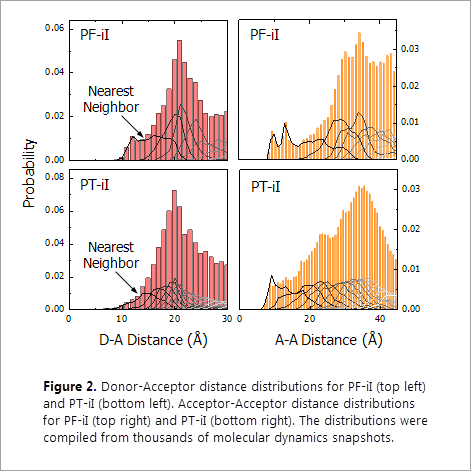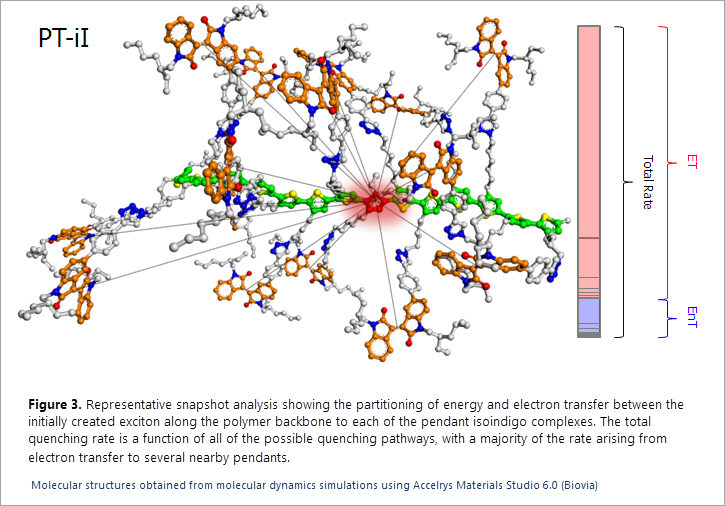Using Origin in Studies of Energy and Electron Transfer for Solar Energy Conversion
Problem
Graph and analyze large datasets generated during spectroscopic studies of energy and electron transfer dynamics in molecular assemblies for solar energy conversion.
Solution
Output data from LabVIEW™ and MATLAB® into Origin for curve –fitting, basic statistics and creation of high-quality figures for publication and presentation.
“We are all avid Origin users and don't use anything else for making figures or fitting data.”
Zachary Morseth is a Ph.D. candidate at the University of North Carolina at Chapel Hill, and is a member of the Center for Solar Fuels. There, he is advised by John M. Papanikolas and employs ultrafast spectroscopic methods and computational tools to study energy and electron transfer dynamics in molecular assemblies for solar energy conversion. Morseth tells us that he began using Origin when he began his graduate studies and that he and others in his group rely heavily on Origin.
“Our group is primarily composed of spectroscopists and microscopists, so data analysis and visualization are extremely important to us. Origin provides our research group with a user-friendly interface for data processing (i.e., smoothing, scaling, etc.), curve fitting, and creating publication-quality figures.
“The curve fitting is robust with the added benefit of facile global fitting to analyze multiple data sets. In addition to these basic features, Origin gives us the freedom to define new fitting functions, a necessary feature as new mathematical models are continually being developed.
“We have also taken advantage of some of the 3-dimensional plotting, allowing us to quickly analyze and interact with multivariable data sets.”
Morseth explains that his work has focused on intramolecular energy and electron transfer processes occurring within light-harvesting assemblies composed of a polymer backbone, with attached isoindigo (iI) pendant chromophores. Morseth compared polymer comprised of polyfluorene + isoindigo pendants (PF-iI) and polythiophene + isoindigo pendants (PT-iI). “Polyfluorene and polythiophene are fairly popular conjugated polymers, while isoindigo has emerged recently as popular chromophore in the field of organic photovoltaics.”
“The curve fitting is robust with the added benefit of facile global fitting to analyze multiple data sets. In addition to these basic features, Origin gives us the freedom to define new fitting functions, a necessary feature as new mathematical models are continually being developed.”
“One of the features that makes these polymer systems attractive is directional energy and/or charge flow to specific sites. Since the solar spectrum spans from the UV to the near IR region, it is important to design molecular assemblies that can absorb a significant fraction of that sunlight and also can move the energy to specific sites to produce electrical current and/or drive chemical reactions. The isoindigo chromophores absorb a significant fraction of the visible region of light, but the polymer backbones serve to fill in some of the gaps and enhance the light absorbing properties.“

Morseth studied energy and charge flow within these polymer mixtures by subjecting them to ultrafast laser pulses (<200 femtoseconds). These pulses served to excite segments along the polymer backbone allowing Morseth to measure the rate of energy or electron transfer to the pendant chromophores.
“The data analysis of the ultrafast experiments was performed in Origin. In order to fully understand these complicated dynamics, we augmented the ultrafast laser experiments with a theoretical model (implemented in MATLAB) applied to polymer structures obtained from molecular dynamics simulations, to simulate the photoinduced dynamics. A major component of this work was in understanding how the polymer structure influenced the rate at which the polymer excited state was quenched. We compiled millions of donor-acceptor distances and imported them into Origin to generate distance distributions and perform descriptive statistics.”

The donor-acceptor distance distributions (Figure 2, red bars) represent the distance between each monomer unit along the backbone, and each pendant isoindigo. The bars represent the total distance distribution, while the lines at the base of the bars represent the "deconvolved" distance distribution (nearest acceptor, 2nd nearest acceptor, 3rd nearest acceptor, etc.).
Morseth notes that in a very simple model consisting of a single monomer unit (fluorene or thiophene), and a single isoindigo chromophore located at a specific distance to the monomer unit, there would be a single energy transfer rate and a single electron transfer rate. However, the system under study was more complex in that each monomer would be surrounded by many pendant isoindigo chromophores so there would be many different individual energy and electron transfer rates. Thus, the total kinetic expression for these quenching processes is a function of all of these transfer rates.
“… I am impressed at how well Origin handles massive data files - files that contain millions of rows.”
Morseth found that in these complex systems, the density of the isoindigo pendants surrounding a single monomer unit had a dramatic effect on the total electron and energy transfer rate. When you have multiple chromophores (3 or more) that are sufficiently close and capable of quenching the polymer excited state, the total energy and electron transfer rates are amplified and can be more than 3 times the rates found in a simple monomer + single chromophore system.
The acceptor-acceptor distribution (Figure 2, yellow bars) illustrates the overall density of the pendant isoindigo chromophores. Morseth notes that while this is not as important as the donor-acceptor distribution, it did show that the pendants tended to be in closer proximity in the PT-iI polymer than in the PF-iI polymer, owing to the relatively smaller size of the thiophene monomer (backbone monomer units are shorter, so the pendants are closer to one another).

The following graphs (Figures 4, 5) represent the evolution of the polymer excited state, from 200 femtoseconds to 1 nanosecond. The homopolymers (PF and PT) are blue while the assemblies (PF-iI and PT-iI) are red.
Morseth explains: “What we see here is very fast quenching of the polymer excited state (within several picoseconds). The transient absorption difference spectra are fairly complicated and make it difficult to come to any sound conclusions regarding what was happening in these assemblies following excitation. We could definitely see that electron transfer was occurring in both assemblies (panel C on both slides shows the electron transfer products), but determining the rate was difficult. We started the computational modeling to augment the experimental results and try to understand why energy transfer dominates in PF-iI and why electron transfer was so fast in PT-iI."
“I especially like how easy it is to make a nice figure. The tools are well laid out and there is a lot of control when it comes to sizing and positioning plots.”
“In the case of PF-iI, the absorption spectrum of the isoindigo overlaps significantly with the emission spectrum of PF (a condition for resonance energy transfer), so a majority of the excited states decay by energy transfer to the pendants. In the case of PT-iI, this overlap is reduced but the electronic coupling (strength of interaction) for electron transfer is increased so almost all of the PT excited states decay by electron transfer."
When asked about the impact of this study on future studies, Morseth says, “This is a first iteration towards the development of an all organic molecular assembly that exhibits broad visible absorption. Future designs might use pendant chromophores with longer excited state lifetimes to help boost solar efficiency.”
He also comments that Origin will continue to be an important part of his research. “I am using Origin in several current projects. One project is similar to the work discussed in this case study, but we will be analyzing the effects of solvent. In addition to making publication-quality figures, we plan to use some of the statistical tools to perform hypothesis testing on whether the solvent governs the macromolecular polymer structures.”